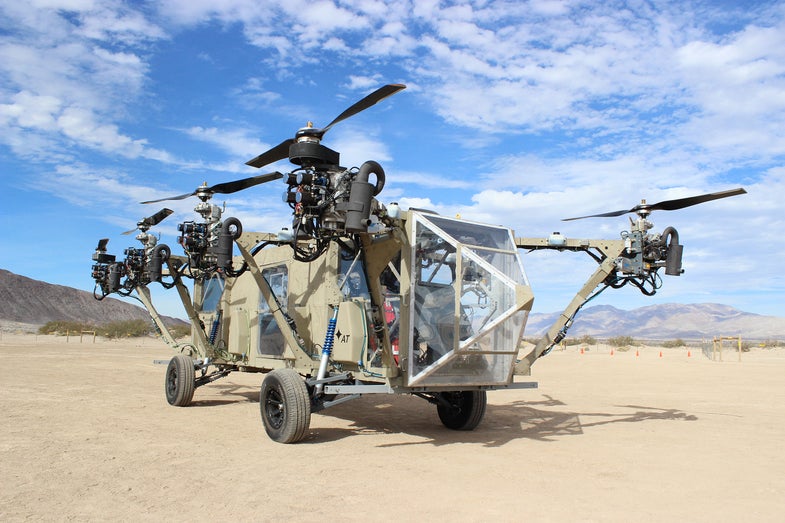The Week In Drones: A Military Transformer, An App For Aerial Photos, And More
Welcome to the drone age! Six U.S. states are now testing drones for the FAA, and there are new developments...


Testing An Anti-Poaching Drone In KwaZulu-Natal
Welcome to the drone age! Six U.S. states are now testing drones for the FAA, and there are new developments in unmanned aerial vehicle technology daily. Here’s a round-up of the week’s best drone news, designed to capture the military, commercial, non-profit, and recreational applications of flying robots.
Delivery, In Development

Last December, delivery company DHL used drones to carry medicine across the Rhine river in Bonn, Germany. This is borderline gimmick drone territory; we’ve seen multiple stunt delivery drone services before. Even big announcements, like the one Amazon made in late 2013, can over-promise so much that it looks more like marketing than new technology. DHL made eight deliveries a day for five days. The drones were piloted by people, and required a transfer of control midway across the river to the pilot on the opposite side. Consider this, then, more of a technological test than anything else. Drones can do new things, like carry small parcels across rivers easily, but their full usefulness is still years away.
Amateur Photographers Overhead
Cooliris, a photo-sharing app company, recently partnered with Aibotix, a drone company, to build a platform for seamless sharing of aerial photos with friends. If a user has both a Cooliris account and an Aibotix drone, they’ll be able to share the photos the drone takes easily with a group. It’s not exactly commercial photography, which is still in a legal grey area, but it’s close. The FAA will, sooner or later, have to figure out the extent to which it will allow amateur photographers to use unmanned flying cameras.
And In Your Pocket
The Pocket Drone is a Kickstarter project that promises to make flying robot cameras easy to steer, easy to conceal transport, and not that expensive (less than $500 for project backers). It’s probably not coming to a nearby window anytime soon, but with 472 backers already promised drones, expect them to eventually film something they shouldn’t.
Anti-Poaching Technology, Tested
Thanks to demand from booming economies in Asia, poaching is a lucrative enterprise. New technology is one way to fight that — poisoned rhino horns, tagging animals, and cameras triggered by movement are all proposed ideas for protecting endangered creatures. A recent project, funded in part by the European Commission, the government of Spain, and the Centre for Wildlife Management at South Africa’s University of Pretoria, tested different kinds of drone cameras in different environments and at different altitudes. They wanted to see how useful the gadgets would be in anti-poaching efforts.The project found, unsurprisingly, that “open areas facilitated target detection, while forest habitats complicated it.” Thermal cameras worked best in the morning and at night. This isn’t the first time drones have done anti-poaching work, but it’s good to have some research back up the idea that drones are useful here.
Transformers, Testing Soon

Black Knight Transformer Truck Copter
The Black Knight, developed with funding from Congress, is an optionally manned helicopter-truck designed to switch between flying and driving during military evacuation missions. The rotors collapse against the vehicle’s body for navigating tight streets, and extend for flying. The goal: a remotely operated rescue machine that can operate in conditions too dangerous for an on-board human pilot.
